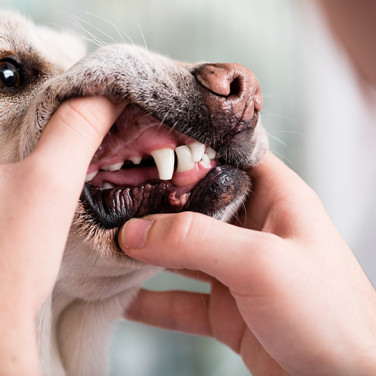DISEASES
Bladder Stones in Dogs - Causes, Symptoms, and Home Remedies
페이지 정보
본문


What are bladder stones in dogs?
Bladder stones, also called cystic calculi or uroliths, are mineral formations that develop in a dog's urinary bladder. They can vary in size and composition, ranging from small grains to pebble-like structures. These stones can lead to frequent urinary tract infections, pain, and blockage of the urinary tract. Not all dogs with bladder stones display obvious symptoms. Common types of bladder stones include struvite and calcium oxalate stones. When they grow to a certain size, they can cause inflammation, pain, and obstruct urination. Failure to treat bladder stones promptly can result in serious complications such as bladder rupture and obstruction. Seeking appropriate medical treatment is highly recommended in these cases for the best outcome for your dog.
Common causes of bladder stones in dogs

Bladder stones can form due to various factors like genetics, environment, diet, bacterial infections, and metabolic abnormalities.
Consider the following causes of bladder stones as well:
-
Dietary factors
Excessive intake of certain minerals can lead to the formation of tiny crystals that can injure the bladder and mix with discharge produced by the damage, gradually growing and hardening into stone-like structures.
-
pH imbalance in the urine
Stones can form in the urine due to an imbalance in the acidity of the dog’s urine. If the pH level of the urine is too high or too low, stones may be more likely to develop.
-
Secondary factors
Stones can be attributed to secondary causes, such as disease. For instance, if your dog has a urinary tract infection due to diabetes, it can lead to the formation of stones. Additionally, in cases of Cushing's disease, the elevated cortisol levels prompt increased excretion of calcium in your dog's urine, which can subsequently result in stone formation. Stones can also arise from factors like liver failure, infection, and an imbalance of calcium and phosphorus.
Symptoms of bladder stones in dogs
Bladder stones in dogs can go unnoticed, especially in females due to their shorter and wider urethra. Larger stones can cause urination problems or irritate the bladder/urethral lining. Initial small crystals are excreted through urine, making symptoms pass without notice. However, common signs include blood in urine and your pet straining to urinate. Stones rubbing against the bladder wall cause hematuria, while urination strain can result from inflammation, muscle spasms, or physical blockage.
Symptoms may also include:
- Abnormal urination
- Decreased urination volume and increased frequency
- Hematuria (blood in urine)
- White or colorless urine
- Stomach bloating and abdominal pain
- Avoidance of exercise and low energy
- Vomiting
Risk of bladder stones in dogs
Stones are primarily composed of two types: struvite stones and calcium oxalate stones. Struvite stones are most frequently found in females around the age of 3 and are more prevalent in certain dog breeds such as Shih Tzu, Miniature Schnauzer, Yorkshire Terrier, Labrador Retriever, and Dachshund.
The main cause of struvite stones is usually a lower urinary tract infection. Calcium oxalate stones are more common in males around the age of 9 and tend to affect breeds such as Keeshonds, Norwich Terriers, Norfolk Terriers, and Pomeranians. If the symptoms of bladder stones are severe and left untreated, it can lead to complications such as bladder rupture, ureteral obstruction, and chronic urinary tract infections. Complete blockage of the urinary tract is an especially dangerous condition that requires immediate surgical treatment at a veterinary hospital.
Are there any home treatment options for bladder stones in dogs?
Depending on the type of stone, it can be managed through diet. Specifically, when dealing with struvite stones that have a higher tendency to cause lower urinary tract infections. You can potentially manage struvite stones with a suitable diet.
However, it is worth noting that not all breeds and types of stones can be effectively controlled at home. The dietary approach may require a significant amount of time to yield noticeable results. Therefore, it is advisable to consult with a veterinarian to determine the best course of action.
Diagnosing bladder stones in dogs

The symptoms of bladder stones are similar to bladder infections and cystitis, so your vet will need to diagnose through a method that can differentiate between the common symptoms.
Bladder stones can be diagnosed through the following tests:
-
Medical history and physical examination
To assess the possibility of bladder stones, a vet will begin by inquiring with the guardian about the onset of symptoms and reviewing medical records for any previous instances of similar symptoms. During the physical examination, palpation of the lower abdomen is performed to identify any signs of pain. In cases where the stone has grown large enough, it may even be possible to detect the stone itself through palpation of the lower abdomen.
-
Imaging test
X-rays can be utilized for diagnosing stones, with some stones appearing black on film due to their radiolucent nature. However, the confirmation of diagnosis through radiography is not foolproof, as some stones may not be permeable to X-rays. By combining bladder ultrasound and radiography, a more accurate diagnosis may also be achieved.
Treatment for bladder stones in dogs
Treatment options include surgical removal, non-surgical removal by urohydropropulsion, and dietary changes. The specific treatment depends on stone type and location. Your veterinarian will provide detailed pros and cons based on your dog's circumstances.
-
Surgical removal
Surgical methods offer the fastest and simplest approach to stone removal. It is imperative to assess the dog’s overall health for anesthesia and operation. Additionally, it is important to note that surgery does not address the underlying cause, thus increasing the likelihood of stone recurrence. In urgent scenarios, such as cases involving ureteral obstruction, prompt surgical intervention becomes necessary.
-
Non-surgical method
A non-surgical treatment method known as urohydropropulsion is available for cases where the stone size is smaller than that of the ureter or urethra. In this procedure, a catheter is inserted into the bladder to remove the stone.
-
Diet
Although it is possible to control certain types of stones through diet, it is important to note that not all breeds and varieties of stones can be effectively managed in this manner. Achieving control over stones through dietary measures requires a considerable amount of time and effort. In cases where stones cause obstruction, surgical intervention becomes necessary for proper treatment.
-
Antibiotics
If a lower urinary tract infection is present, it is treated with appropriate antibiotics.
Preventing bladder stones in dogs
To effectively prevent bladder stones, it is crucial to maintain an adequate diet and ensure sufficient fluid intake. It is important to be aware of the symptoms associated with bladder stones and diligently observe your dog's urination habits to notice when an abnormality ocurs. Regular health checkups serve as an additional valuable tool in the prevention of bladder stones for dogs.
Find out more about your dog’s symptoms and diseases on the Buddydoc app!

The Buddydoc library is filled with everything you’d want to know about each symptom and disease your pet may experience. If you would like to find out more about the causes, signs, treatments, preventions, and more for your dog’s disease. Try out the Buddydoc app and search for your pet’s symptoms or diseases in the Buddydoc library.













